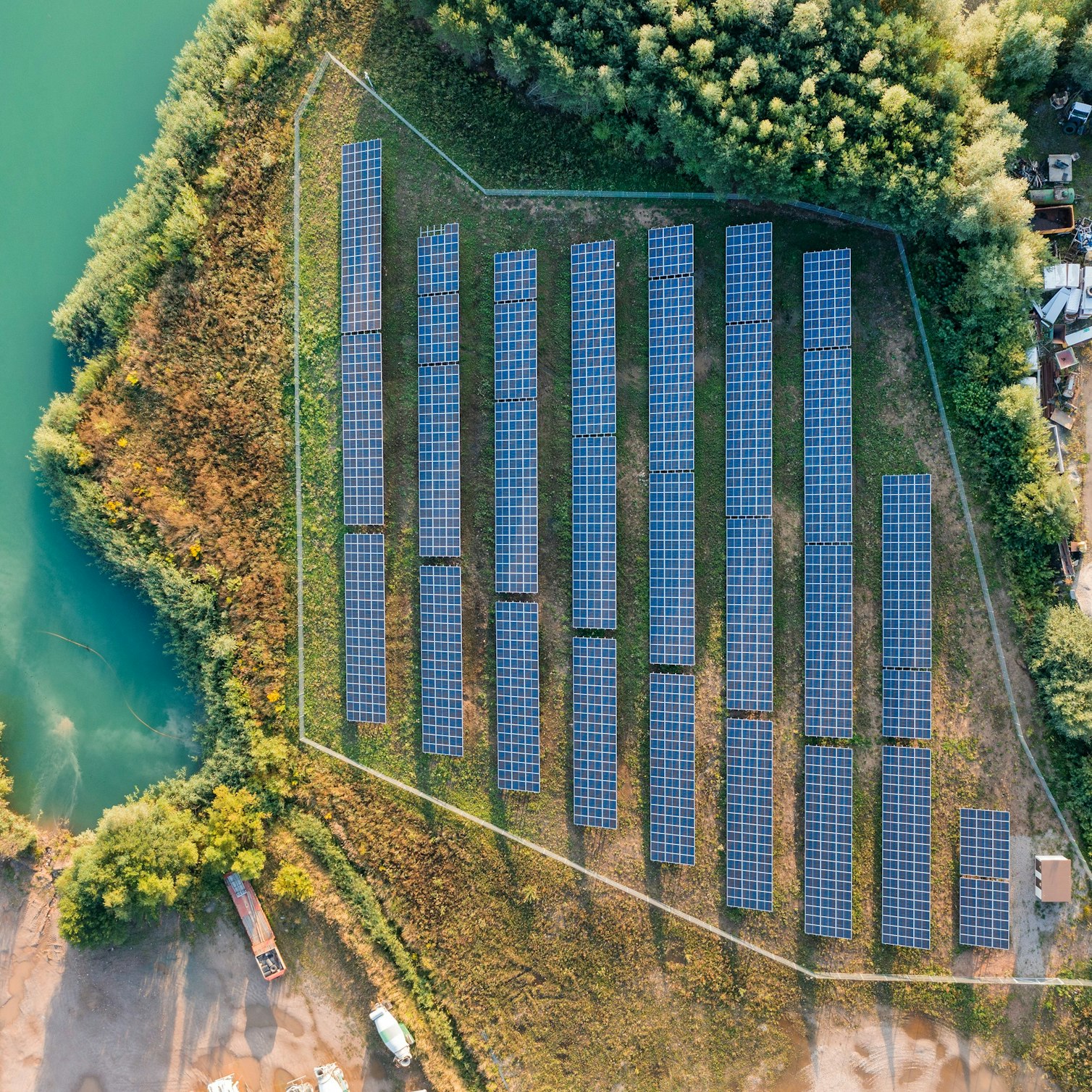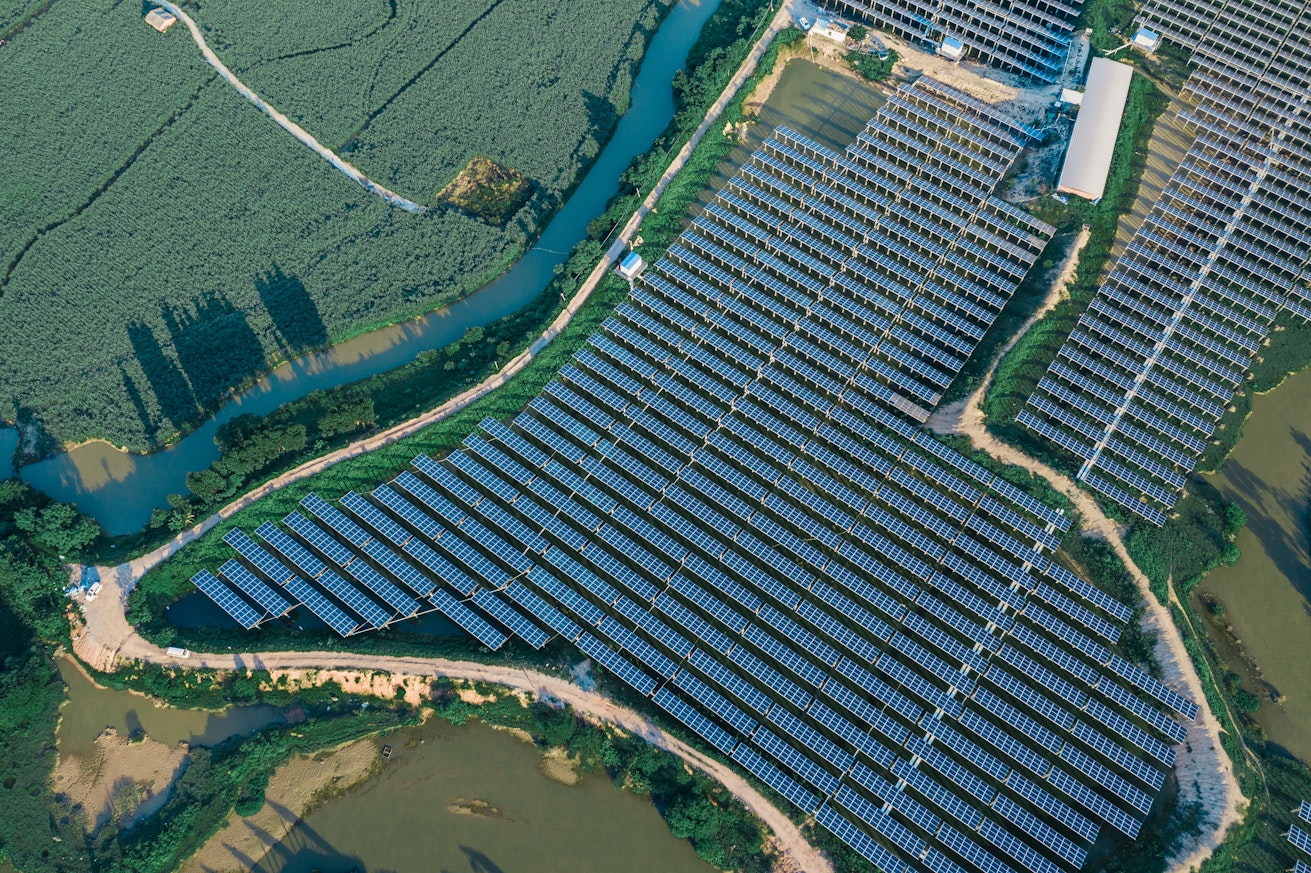- Solar energy blog
- Solar Energy Australia: is mid-scale solar the future of renewables?
Solar Energy Australia: is mid-scale solar the future of renewables?


Laura Rodríguez
Territory Manager Oceania & Nordics
Laura is a renewable and software industry sales professional, currently working at RatedPower as Territory Manager Oceania & Nordics. With a background in International Business and International Trade, Laura previously worked in the business strategy area in various companies as well as as a market analyst for the Government of Spain in Australia.

Content
As the world collectively moves towards a greener future, innovation is playing an important role. Among all the emerging solutions, one holds particular promise, mid-scale solar installations.
The role of mid-scale solar energy projects is often underrepresented, but their impact is potent. Today we will pull back the curtain on these small-yet-powerful plants, discuss their true potential, and look at how sun-soaked Australia is harnessing the power of mid-scale solar installations.
If you want to delve deeper into the advantages, challenges, and optimization of small solar PV plants, listen back to our recent webinar with Laura Rodríguez, Senior Account Executive at RatedPower, and Ming Cheng, our PV engineering expert. During the webinar giving insight into the small PV plant development landscape, they will discuss how RatedPower can help you speed up your prospecting efforts when creating small sites.

What are mid-scale solar PV installations?
Mid-scale solar PV installations, often overshadowed by their larger counterparts, are becoming an increasingly important part of the renewable energy landscape. These PV plants typically generate up to 5MW for alternating current (AC) and 5.8MW for direct current (DC).
They can also include battery energy storage systems (BESS), providing yet another layer of flexibility. The beauty of these installations lies in their simplicity and adaptability, bringing energy generation closer to where it’s used.
Unlike large-scale solar power plants that require intricate and expensive grid connections, these nimble installations can operate independently. This makes them perfect for targeting the unique needs of the communities they serve.
They can also make use of otherwise wasted space, from unused farmlands to idle rooftops, transforming them into powerhouses of clean, renewable energy. The speed and affordability of mid-scale solar PV installations set them apart, allowing them to be implemented quickly and more cost-effectively than their larger-scale counterparts.
Not only do they bring power, but these installations also fuel job creation within local communities. They offer the potential for consumers to become producers, selling excess solar power back to the grid and generating additional income.
The potential is enormous, as demonstrated by a project back in 2017 that saw medium-scale solar installations pop up on 12 industrial rooftops in the Brisbane suburb of Eagle Farm. This project, which generated approximately 11.6MW of solar power, aimed to overcome the technical, regulatory, and commercial barriers that traditionally limited solar installations. By doing so, it unlocked significant market opportunities and helped to ensure energy reliability.
It’s not just urban rooftops that can benefit from these installations. A recent Farmers for Climate Action (FCA) report highlighted how Australia’s agricultural sector is well-positioned to leverage solar PV technology.
The report argues that smaller on-farm renewable energy projects are overlooked in the country’s transition to net zero emissions. It calls on the government to reform distribution networks, allowing farmers to share power with neighbors and local communities and thereby earn a secondary income.
The report also highlighted how the benefits extend beyond mere economic gain. Adopting renewable energy within agriculture could cut costs, reduce emissions, build resilience, and improve power reliability. This aligns with farmers’ eagerness to use renewables and reduce costs.

How Australia is maximizing its solar energy resources with mid-scale solar installations
It’s fair to say that Australia is embracing the potential of mid-scale solar installations with a slew of new and upcoming projects. The partnerships between major companies like Sustainable Energy Infrastructure and Yates Electrical Services Group (YES Group) are leading the charge in this new wave of sustainable energy projects.
One such project that recently came to fruition is the Woods Point solar and battery storage farm, located near Murray Bridge in South Australia. This combined solar and battery project, generating a hearty 5MW, is a testament to the progress made in the mid-scale solar sector.
It features 9,000 bi-facial Risen solar panels and a 2.5MWh, two-hour battery storage system. The project stands as a milestone in South Australia’s energy transition, underlining the potential of storage solutions and regional distributed energy assets.
Sydney-based MPower Group Ltd has also built several mid-scale solar projects across Australia. With 5MW solar farms such as Mannum Solar Farm Project, Pirie Solar Farm, SA, and Solar For Samoa already connected to the grid, plans are in place for the development of the Faraday scheme in the state of Victoria.
The project will comprise 11,000 bifacial photovoltaic (PV) modules spanning over 100 km (62 miles), and will be situated northwest of Melbourne. Due to be constructed in 2023, the plant will produce more than 11,500 MWh of electricity annually, enough to power 1,500 homes.
Nathan Wise, MPower CEO, said of the project in 2021, “MPower is actively building a pipeline of 5MW solar project sites and currently has exclusivity over six sites. We are looking to create an initial portfolio of up to 20 renewable energy assets with an aggregate capacity of 100MWac and an estimated value of more than $150 million once fully constructed.”
The Woods Point project is just the jewel in the crown of YES Group and Sustainable Energy Infrastructure's impressive portfolio. The partnership boasts approval for 55MW across 11 different assets in New South Wales and South Australia.
There are currently five projects in operation, three under construction, and three more in the design and procurement stage. The companies are focusing their efforts on the sub-5 MW mid-scale sector, offering a faster approval process and avoiding grid connection challenges faced by large-scale projects.

YES Group, with over 120 solar farms under its belt, emphasizes the value of the swift and straightforward development process within the sub-5 MW market. Along with two additional projects in Port Wakefield and Padthaway, the Woods Point project will generate 27 GWh of solar energy and store 3 GWh of energy. An ambitious $200 million investment plan is in the works, aimed at developing between 70 MW and 100 MW of projects across eastern Australia in the coming years.
Meanwhile, in a blend of sport and sustainability, a South Australian racecourse has crossed the finish line as a fully operational DC-coupled solar power and battery farm. Retailer Flow Power brought the Berri Energy Project online, consisting of a 5.8 MW solar farm and a 6.7 MWh battery. Flow Power is expanding from merely retailing green energy to developing its own renewable energy projects, concentrating on the mid-scale solar segment.
The Berri Energy Project uses DC-coupling technology for its efficiency and infrastructural benefits, resulting in leaner, more cost-effective projects. The battery primarily functions as a solar energy shifting device, with Flow Power’s kWatch Controller system automating the management of the system.
This strategy allows developers to sidestep protracted grid connection processes and local government approvals, enabling quicker project realization.
Are mid-scale solar installations the future of renewable energy?
Mid-scale solar power installations will be a big part of the future of renewable energy. They have the power to democratize the green transition, extending its reach to a wider audience and balancing the load at the local grid level. As we increase our reliance on mid-scale solar power, we should anticipate a shift towards a more intricate and decentralized energy mix.
This scenario, while beneficial, calls for sophisticated grid management strategies. Spreading out these installations could demand additional infrastructure, including overhead lines, making it crucial that they are strategically positioned and make optimum use of existing infrastructure. The leaps in energy storage and smart grid technologies can also offer solutions to integrate these installations seamlessly into the power grid.
Are you looking to streamline your photovoltaic plant projects? Turn to Rated Power. Automate, optimize, and revolutionize your solar energy journey today.
Latest stories
Related posts
Technology and engineering
Outsmarting congestion: How efficient solar design helps navigate Nordic grid limits
Learn how Nordic operators and solar developers are adjusting to tighter grid conditions and how policy and design decisions are keeping projects on track.
Updated 16 DEC, 25

Technology and engineering
The rise of ultra-thin perovskite solar cells
Learn about Japan’s $1.5B initiative to commercialize ultra-thin, flexible perovskite solar cells and how it could transform the solar landscape globally.
Updated 30 SEP, 25

Technology and engineering
The green hydrogen boom in LatAm
Latin America is emerging as a green hydrogen leader. Learn how LatAm countries are leveraging solar and wind power to drive green hydrogen production.
Updated 22 JUL, 25

- RatedPower
- Solar energy blog
- Solar Energy Australia: is mid-scale solar the future of renewables?
 Watch a demo
Watch a demo Ask our AI Product Expert
Ask our AI Product Expert
